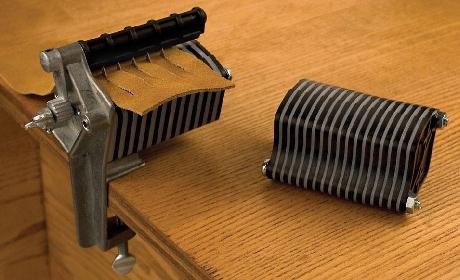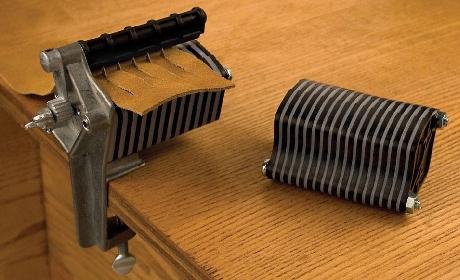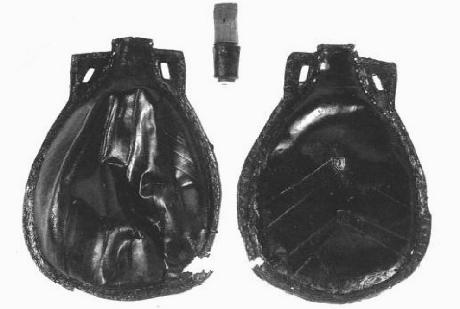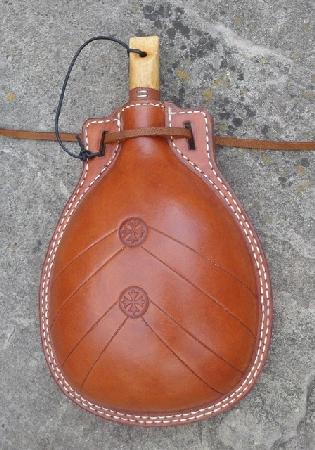-
Posts
5,931 -
Joined
Content Type
Profiles
Forums
Events
Blogs
Gallery
Everything posted by fredk
-

Scalloped leather trim, with and without dots needed
fredk replied to OldRedMule's topic in Suppliers
Sorry no. When I found out it was false I deleted all my info on it. But I do remember one thing which rang warning bells - it came off a spool and you bought it by the metre ( by the yard / 3ft to you). Also it came in different widths and was pre-pierced for sewing It was through ebay.uk. If I find it again I'll post a link -

Crochet needle storage wallet
fredk replied to Abelc's topic in Purses, Wallets, Belts and Miscellaneous Pocket Items
Yes, what has been said already - you've done a fine job on a complicated item In some ways I can see this being useful to an artist. A holder for pens & pencils and a small sketch book -

Scalloped leather trim, with and without dots needed
fredk replied to OldRedMule's topic in Suppliers
If you can, make your own. This 'lace maker' from Tandy will make fringe as well A while back I was looking the very same things you are now wanting and everything I found, except one, was all made in faux leather, ie not real leather and came out of China. The one thing I found was a UK seller making fringe in 4 to 6 inches lengths using real leather. I did buy some for my project but later bought the Tandy Lace Maker thingy Making it yourself you'll have more control on quality and sizing as well as it is far cheaper -
How much do you need to cut at any one time? You could just put your leather on your cutting area, use a long straight edge and cut with a rotary knife. That's what I do if I just need a short length from a soft leather Or you could make up a special cutting block; basically a block of wood with a straight edge glued on, a razor blade embedded to the side, and beyond that another small length of wood. Glue a piece of wood onto the two pieces as a roof, the height being just the thickness of your leather. This makes a tunnel with a blade. Cut a strip of of your leather and pull thru the tunnel. The roof piece keeps the leather down and the razor cuts. An elaborate version of this it to have two or more blades and cut multiple strips at the one time Tandy used to sell a tool using this idea. Oddly enuf they called it a 'lace maker' https://tandyleather.com/products/table-top-lace-cutter It costs about $50. I got mine in one of their sales, cost me about $20 / £18 Its better with firm leather but with softer leather a sacrificial wood stick can be used to hold the leather tighter to the blades
-
I've been following this and thinking about it. The only time I had leather like the example was a piece of chrome-tan upholstery leather. I still have some of it. The only way I got around the 'loose fibres' was, after cutting nearly to size I liberally applied some contact glue and rubbed it in. Then after gluing to the other pieces and/or after sewing I cut down to size, thus cutting through the glued down fibres
-
aw, bummer, But what was the difference to the Brewers Pitch in Tudor & medieval times as the jacks have shown traces of wine or beer having been stored in them
-
These are a style called 'bucket boots' and are commonly available through stores selling re-enactor clothing Take your pick; https://www.google.com/search?rlz=1C1CHBF_enGB883GB883&sxsrf=AOaemvJha2fvzb2NnHWp6J7UyLZpknzBjQ:1632262777029&source=univ&tbm=isch&q=medieval+bucket+boots&sa=X&ved=2ahUKEwinuYTYjJHzAhUhRkEAHR1wDC0QjJkEegQIBxAC&biw=1366&bih=625&dpr=1
-
Mix beeswax and neats foot oil into a paste, as thick or thin as toothpaste, and apply liberally all over and after a while buff off the excess with a clean new shoe polish brush and some clean rags
-
Most excellent 1. US quart? a UK quart is more; 32 fld oz to 40 fld oz 2. What do you seal the insides with?
-
A leather bottle? yes? Over here a 'canteen' can mean many things, such as all the things needed to eat a dinner, eg cutlery, glasses, plates . . . . Ok. so I'm only teasing ya! But a leather water/wine flask type thingy. As long as you don't want to see it too soon I'll try making one. I've been wanting to make a sort-of copy of one from the ship Mary Rose The original; And someone else's reproduction of it; It involves some wet moulding, so I'll have to set to to make the buck but I'll not be doing it exactly as that other person did it
-
I believe 'Help for Heroes' charity is still going and although rather smaller than it was a few years ago I think it'll still be carrying on for some time. Its been a while but I/we (my club) gave them a load of plastic modelling things, eg, kits, tools, paints & glues et cetera HfH uses such hobby things for ex-service personnel to help them get over PTSD Contact; a, local police, b. Citizens Advice Centre, c local Military barracks - in any order, one of them is bound to know of a HfH unit near you. There are dozens located around the UK https://www.helpforheroes.org.uk/ You'll know when I've popped me clogs as my #1 son will be on LW selling my stuff.
-
A link to the Tandy punch https://www.tandyleather.world/products/pocket-notch-punch I just use an old 3/4 inch circle punch which was damaged and which I ground to a 1/2 circle then I round off the corners (sometimes) with a knife or scissors
-
I'll give you one reason - they aren't taught how to do it In the US, iirc, you have 'shop' in school where you learn woodwork and metal work. It is a rather intensive learning. Here in the UK we had 'wood work' classes which was no more than playtime with some pieces of wood. Nothing was taught, it was just a bit of school time in which time was wasted until the next class.
-
The really big down-side of buying internationally. Do let them know 1. how p***ed off you are with this and 2. that you've been discussing this on an international forum for both experienced and newbie leatherworkers and that their reputation has now dropped to below the Titanic
-
All the makers of these sorts of things seem to have their own non-standard thread In the past I've re-tapped the thread to match previously bought screws or bolts
-
Having been a postie a long time ago and received numerous injuries my extended sympathys are with your post-person. A cut from that blade could be very nasty. I'd be contacting the selling company and making a strong complaint. Looking for recompense, or replacement items. In the UK it is the seller's responsibility to ensure the goods get to the customer in good shape and fit for purpose. These items look and sound to me to be not fit for purpose. If you paid by credit card, usually the credit card company can take up the case. In the UK the CC will only look at items costing over £50 (last I knew) but anything over that and their insurance will get involved
-
The last time I bought a knife, a 'clicker' knife from Le Prevo, they put some thin foam sheet around the blade, then some cardboard around the whole knife, then some bubble wrap around that and used about a mile of parcel tape around the lot and then it was put into a thick plastic bag. The blade protection extended about 1 inch each side of the blade and about 2 to 3 inches beyond the tape. All this for a £4.50 knife! On a slightly different subject but similar; I bought some dye on-line. The seller sent the bottle loose in an oversized box. The cap was not 100% tight and there was no seal so a small amount leaked out. From another seller they sent the bottles with, on each, multiple layers of tape wrapped around the cap to bottle join, wrapped in newspaper, and in a self-sealing plastic bag and this all wrapped in bubble wrap and shredded paper in a box just about the right size for the bottle.
-
There is one version which is a rivet on. Like a ready rivet base and stem. Then you hammer, lightly, the post and ball of the Sam Brown stud. I had a few of them but I could never get them really tight. I think the screw base ones are better. Just cover the base part with a piece of very thin leather to keep it from scratching a knife blade edit to add; Tandy has the rivet type https://www.tandyleather.world/products/sam-browne-buttons-washers?_pos=1&_sid=25db6ec99&_ss=r
-
A peg board is real handy. I have all those other storage thingies too but I have different sized wood pegs on the back-board and its dead handy for putting something up on instead of losing it in the junk, er. . . . on going projects on that bench whilst working on things
-
yaaay! I can cut the first notch on my eco-friendly fly eliminator. I got one real good this evening. I have the blud-lust now, just need more victims
-
, but one fly a plague does not make. By the time I got my swatter it had got trapped on the sticky fly-paper
-
How is it a fly can find its way into room thru a 1/4 inch hole but can't find its way out thru a door hole 6ft by 3 ft?
-
In the meantime, you can use them to put your cup of coffee on, close to hand whilst sewing
-
Read the instructions. ~It usually says to put the 'polish' into 5 L of water and apply with a mop. And to remove, use ammonia diluted in water to about 5% and to remove after about 5 coats have been used BTW this stuff is far cheaper than Resolene. 4 US ounce, about 118ml, of Resolene costs me about £6. I can get the Astonish for about £1 for 750ml. I use it on everything except floors! ~ as a wood varnish, on deer antler, on my plastic models, to make PVA glue waterproof and quick drying






